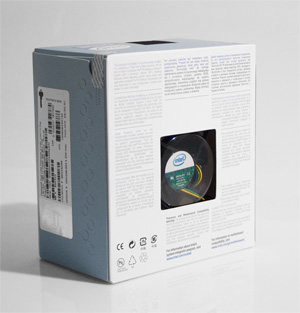Intel Pentium E2140 Dual Core Processor
Intel has spent millions making their "Core" brand synonymous with high performance processing. In these days of the Core Duo, Core 2 Duo, Core 2 Quad, and Core 2 Extreme, it’s pretty easy to find a Core microarchitecture-based processor to match nearly any possible price point. The performance levels of the Core 2 product lineup have been so dominating that Intel really didn’t have to spend a penny if they didn’t want to, although big time marketing campaigns are good for converting those who just want the latest and greatest and don’t necessarily read enthusiast sites like ours here.
Despite the Core 2 being a successful lineup from top to bottom, Intel’s Pentium product name is still a valuable asset. Intel’s last Pentium-branded product launches happened mid last year, with the “Presler” core based Pentium-D processors hitting the market at speeds in excess of 3.0 GHz. Soon afterwards, the first generation Core 2 processors hit the streets and (more or less) dominated the Pentium-D in terms of performance, all the while consuming far less power and creating much less heat. From that point forward, many had figured the Pentium name would be essentially dead, simply living out its final days as inventory in warehouses until the Core 2 made it obsolete.
Apparently, this is not what Intel had in mind. A while back, we started to hear rumblings of a “new” Pentium processor. While the Pentium had always targeted the performance crowd, it appeared that Intel would be taking the name in a new direction, pushing it to the value sector where their Celeron brand typically resided. As the Celeron name does not have a strong following, replacing it with an aging (but still well known) brand like Pentium does make quite a lot of sense. The question is, what really is this “new” Pentium processor? Is this a new architecture, or simply a new chip based on something we’ve already seen?
The answers to those questions are finally here, as the first “new” Pentium processor has arrived and is running in our lab. This new processor is shipping at two speeds, 1.6 GHz (E2140) and 1.8 GHz (E2160), is based on a dual-core architecture, and ships in the same powder-blue box we’ve come to associate with the Core 2 Duo.
|
Intel Pentium E2140 Shipping Box - Front
|
Intel Pentium E2140 Shipping Box - Rear
|
|
|
So what exactly IS the Pentium E2100 series? What we basically have here is a stripped down, low-clocked “Conroe” processor, which is the architecture used in the initial Core 2 Duo product lineup. “Conroe” cores typically have 4 MB of shared L2 cache and start at clock speeds of 1.86 GHz and higher. Low-end Conroe processors like the Core 2 Duo E6320 start at about $170 today. Pentium-E2100 processors are starting at around $90, however, almost half the cost of the cheapest Core 2 Duo.
The Pentium E2140 drops the Conroe clock speed down to 1.6 GHz at its lowest, and has 1 MB of shared L2 cache. Cutting out L2 cache dramatically decreases transistor count and die size, and lowers power consumption and heat production. Intel has always decreased cache amounts for their low-end Celeron lineup, which further solidifies the theory that Intel will be dropping the Celeron brand in favor of the Pentium as their new low-end brand.
The Pentium E2100-series also runs at a slower 800 MHz front side bus, in comparison to the Core 2 Duo’s 1066 MHz FSB and the newer / upcoming 1333 MHz FSB. This cuts down on bandwidth, but at stock speeds this should not be a major issue. Of course, a low stock front side bus speed also bodes well for overclockers, who should be able to push this chip far higher through FSB tweaking in comparison to chips which have a high stock FSB.
Beyond the cache size and front side bus speed decrease, the Pentium E2100-series is more or less identical to a Core 2 Duo. Both these chip lines are manufactured at 65nm, use Socket-775 interfaces, and support 64-bit processing. The “Conroe” processor is still very efficient per clock, and if your application is not cache heavy, performance will be close on a clock for clock basis to a similarly clocked Core 2 Duo. The Core 2 Duo is obviously a superior processor, but that’s not to say that the new Pentium E2100 lineup is slow, however.







